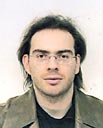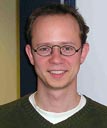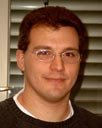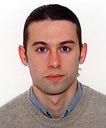Christian HANSEN
Departement of Radiation Sciences, Uppsala
Christian.Hansen@cern.ch

Out of four years of my Ph.D. thesis I was employed 2 years by CERN as a Doctoral Student. My first year in CERN I worked in EP/TA-SD with the Pad-HPD (a fast, large area, highly pixelized Hybrid Photon Detector) development and with Tau-RICH (a project to investigate the limitations to use a RICH-technique for tau neutrino appearance detection). The second year I was employed in EP/ATT and worked with ATLAS Software. My main task was the development of a Material Service, giving integrated material of the ATLAS Inner Detector to reconstruction programs, reading from (GEANT) Detector Simulations. Since half a year ago I continued my Ph.D. in Uppsala University (Sweden), doing physics analysis for an Susy decay channel of the charged Higgs, using a fast ATLAS simulation.
Jeffrey HARTNELL
Oxford University
jeffrey.hartnell@physics.ox.ac.uk

Michael HELDMANN
University of Freiburg
heldmann@cern.ch

I'm doing my Ph.D. thesis on ATLAS. As one of the all purpose detectors at the LHC ATLAS needs to make use of hadronically decaying tau leptons in certain decay channels of HIGGS bosons and in SUSY searches. I'm working at the algorithmens for descriminating these hadronic taus against different jet types. The detailed investigation of their performance is also part of the work. The updated knowledge of performance is implemented into the parametrised simulation of the ATLAS experiment.


